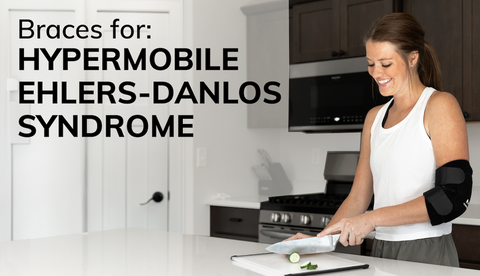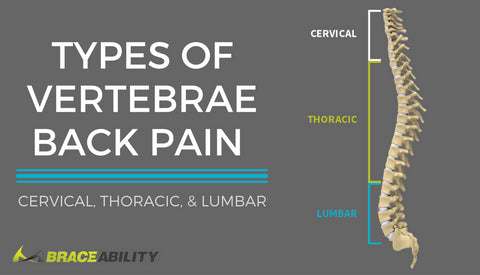Knee Replacement Surgery and Recovery
You've had enough. Your knees are always sore and hold you back from your active daily life. It seems like you have tried all the exercises and remedies you possibly can, so what's next? There are many options you can choose from. BraceAbility offers a wide variety of braces for different types of knee pains that you may be experiencing. Check out the BraceAbility website for more information about knee conditions and braces. If you have very severe pain that is not getting better, it may be effective to look into a knee replacement.
What is a Knee Replacement?
A knee replacement consists of a mechanical implant that replaces severely arthritic or damaged knee joints. They are actually very common and performed on more than 600,000 people in the United States each year. Statistics say that more than 90% of people who have had total knee replacements experience less knee pain, improved mobility, and quality of life.
What Happens During a Knee Replacement Surgery?
There are two different types of knee replacement surgeries:
- Total Knee Replacement
- Partial Knee Replacement
Total knee replacements makeup about 90% of all knee replacement procedures and is one of the most successful surgeries in all of medicine - if that doesn't make you feel better about having a total knee replacement then I don't know what will! During a total knee replacement, your knee joint is repaired by replacing the rough and irregular surfaces of the worn bone with smooth surfaces helping to reduce pain and provide a functional joint. This surgery is recommended when you are suffering severe knee pain or stiffness that is limiting your everyday activity, have uncomfortable pain while resting, experience knee inflammation and swelling, or failure of improvement to the knee when using other treatments. If that is the case, talk to a professional today.
Partial knee replacement is the second type of knee replacement surgery one can undergo. This surgery consists of replacing only the damaged part of the knee cartilage with a prosthesis (artificial body part). The benefits of undergoing a partial knee replacement is that range of motion is better preserved as well as knee function due to the healthy tissue and bone in the knee still being present. A quicker recovery time is a major benefit for this surgery due to the ability to be mobile sooner. Those with conditions including medial (middle), lateral (outside), or patellofemoral (joint between knee cap) knee osteoarthritis can be considered for partial knee replacement.
Once talking to your doctor, you are able to better understand which surgery is best for you or maybe all you need is a knee brace from BraceAbility to help support, protect, and minimize pain in your knee. If surgery is what you need, fortunately, total knee replacement and partial knee replacement surgeries are very efficient and can help lead you to a healthier and more active lifestyle.
If you experience any of these signs, you may need to look into getting help from a professional:
- Pain after extensive use
- Joint stiffness after inactivity or rest
- Loss of mobility
- Pain that seems to increase in humid weather
- Pain that prevents you from sleeping
- Knee arthritis (most common cause of knee pain)
- Osteoarthritis
- Rheumatoid arthritis
- post-traumatic arthritis
It is important to take care of your body. Keeping your knees healthy is essential to living an active and healthy life. If you are experiencing any of these signs, talk to your doctor today to find the best solution for the knee problems you are dealing with.
How to Recover From Knee Replacement Surgery
Everyone is different when it comes to their recovery time after surgery. After a total knee replacement and partial knee replacement, the success of your surgery will affect how long your hospital stay will be. It is important to follow all instructions and advice the orthopedic surgeon gives you while at the hospital and for at home. Taking care of your wound, eating the right foods, and doing the necessary exercises are all important to ensure a decent recovery time period. Paying close attention to your body and how you are feeling after surgery is key in order to prevent blood clots and infections. There are a lot of things to keep track of and pay attention to in regards to having a healthy and successful knee replacement surgery.
You may be feeling bored at home while recovering from your surgery, check out the BraceAbility blog for an infographic describing things to do after surgery to help keep you entertained.
Regardless of if surgery is right for you, BraceAbility offers many types of knee braces to help minimize pain or prevent potential injury while recovering from surgery or in the future. Applying compression to the area in pain can help ease the pain and lead you to a more comfortable life. The compression knee sleeve is ideal for those wanting to be mobile to an extent and at ease while going through the recovery process and to protect their knee in the future. This sleeve enhances mobility due to the compression helping to increase blood flow and also supporting the injured knee.
Another knee brace offered by BraceAbility that can be used while experiencing knee pain is the Knee Immobilizer. It is the best knee brace possible for immobilization and post-operation knee surgeries. This specific knee brace has cold/hot therapy gels that can be placed in the pockets of the rigid knee stay. It is used to immobilize the knee while providing compression and comfort. While wearing the knee immobilizer, flexion and extension are able to take place due to the fitted anterior stays.
The Patella Stabilizer Brace is another affordable and effective knee brace that helps in the processes of dealing with knee pain or recovering from surgery. With an open-patella design, this breathable and lightweight knee brace provides support while stabilizing the kneecap and limiting unusual movement of the kneecap.
Knees are an essential part of your body. Keeping them healthy allows for you to be active and comfortable every day. They play a big role in supporting our body weight and keeping us going. When undergoing a knee replacement surgery or wearing a brace to relieve knee problems, follow all instructions closely to rid yourself of all the unnecessary aches and pains.






